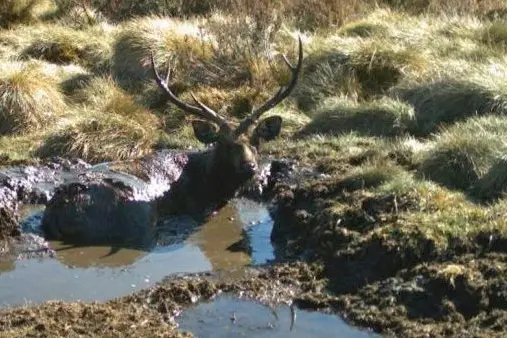PHOTO
A DRAFT national plan to tackle the exploding numbers of feral deer across Australia could be a "potential game changer", according to the Invasive Species Council (ISC).
Feral deer populations are at record levels, with North East Victoria among the hardest hit regions in the country.
But ISC chief executive officer Andrew Cox hopes the national feral deer action plan can stop the spread of one of the country's most concerning emerging pest animals.
"The message from this plan is simple; if we do nothing to control feral deer then everybody loses, but if governments and landholders step up we can stop the spread, reduce their impact and protect our precious places," he said.
"The deer plague has already taken over most natural areas on the east coast.
"Scientists now predict that without action feral deer will inhabit every habitat in every part of Australia.
"Implementing this national plan is our best shot at avoiding wall to wall deer across the continent."
Mr Cox said in the past two decades, feral deer numbers have exploded tenfold across Australia and there are now millions of deer causing serious environmental damage and costing farmers hundreds of millions of dollars every year.
"They overgraze and trample native grasslands and ring–bark native shrubs and trees," he said.
"They cause erosion and degrade water quality by wallowing in wetlands and streams, impacting the homes of native species like the platypus.
"Feral deer are also a major risk on our roads.
"In some parts of the country you are now more likely to see a deer on the side of the road than a kangaroo.
"A large deer can weigh in at more than 200 kilograms and could have devastating consequences for Australian families driving on major roads.
"In Victoria, it is estimated that feral deer will cost the state's economy up to $825 million over the next 30 years due to motor accidents."
Mr Cox said plan is also a wake up call for the Victorian and Tasmanian governments, where deer are still legally protected as a game animal for hunters, "reflecting an outdated and early colonial attitude to this pest".
"The proposal to establish a national containment zone to stop the westward spread of feral deer is an important feature of the plan," he said.
The release of the draft plan follows a 2021 Australian Senate inquiry into the impact of feral deer, pigs and goats in Australia which recommended "that the Australian Government commit to providing significant long–term funding to support the implementation of the proposed National Feral Deer Action Plan".
To view the plan go to https://feraldeerplan.org.au/the–plan/.
Submissions close by March 20.
To provide comment, please email coordinator@feraldeerplan.org.au.
Key findings from the report included:
• Left uncontrolled in good conditions, feral deer populations can increase by 34–50% every year, meaning that a small herd of 30 feral deer can grow to 500 in 10 years.
• Over the coming decades, climate and habitat suitability models predict that most of Australia could be inhabited by at least one species of feral deer unless more action is taken.
• In 1980, there were an estimated 50,000 feral deer in Australia, by 2002, the estimate had grown to 200,000 and in 2022, the population is likely to have reached 1–2 million in Australia.
• Current populations are too high to be controlled by recreational hunting or recent control efforts.





